Egg Freezing Malaysia - Choices and Consequences
Published in Social Sciences, Pharmacy & Pharmacology, and Paediatrics, Reproductive Medicine & Geriatrics
Please refer to the following articles:
Is IVF Genetic Testing (PGT-A) Useful For Older Egg Freezing Patients?
Considering Single Motherhood By Export Of Frozen Eggs?
Expert Talk: Social Egg Freezing Overseas For Women In Singapore
How To Prepare Your Body For Successful Egg Freezing
Please also see the slide presentation video:
Egg Freezing in Malaysia - Beware of Advertisements Claiming High IVF Success Rates with Frozen Eggs
Do not believe claims of high IVF success rates of 40% to 50% with frozen (vitrified) eggs. Many Malaysian fertility clinics will tell you that such high success rates are published in reputable medical journals, and are achieved using the latest vitrification technology that avoids ice crystallization damage.
What they don’t tell you is that such high IVF success rates are in fact based on frozen donor eggs from young, healthy women (20 to 25 years of age, with ideal body mass index and high ovarian reserves, i.e., AMH levels and antral follicle counts). Egg donors are carefully selected to be the most fertile women in their age group cohorts. For example, in the USA, only 5% of applicants are accepted to be egg donors.
This is not reflective of older career woman freezing their eggs, who are typically aged between their mid-30s to early-40s, with variable BMI and much lower ovarian reserves. Hence, good results on egg freezing published in reputable medical journals are highly skewed, because most of these studies compared fresh versus frozen (vitrified) eggs from carefully-selected, young, healthy and highly fertile egg donors.
Beware that the IVF success rates with frozen eggs drop exponentially with increasing age, due to the rising incidence of chromosomal abnormalities in the frozen eggs. As such, the IVF success rates with frozen eggs from older women are very much lower than those advertised by foreign fertility clinics, as reported by the news media.

Egg Freezing in Malaysia - Beware of the quality control standards of cryostorage facilities within IVF labs
It is not just about lower costs in Malaysia! This is crucial, given that there had been catastrophic failures in the low-temperature storage of frozen eggs.
It is often the case that developed countries have stricter regulations and better quality control of IVF clinics, as compared to developing countries. For example, compare Australia versus Malaysia or Thailand. In Australia, IVF labs are regularly inspected and audited by the Fertility Society of Australia (FSA) and the Reproductive Technology Accreditation Committee (RTAC) of Australia. Are IVF labs in Malaysia and Thailand subjected to similar mandatory inspections and audits?
The fact that you can read the news about frozen egg storage failures in the USA confirms that American fertility clinics and IVF labs are subject to strict regulatory oversight and good quality control. Hence, they quickly acknowledged their failures publicly, despite knowing that they would likely be sued for millions of dollars.
Can such transparency and honesty be expected of private fertility clinics and IVF labs in Malaysia, where government regulation and oversight are less strict?
Egg Freezing in Malaysia - Beware of IVF Genetic Testing (PGT-A / PGS)
In Malaysia, elective egg freezing has been available to non-Muslim women for several years, and some egg freezers have undoubtedly started using their frozen eggs in IVF treatment.
You are an older woman who had previously frozen your eggs in your mid to late-thirties, and the time has now come to use your frozen eggs in IVF treatment.
A persistent and nagging question at the back of your mind is the risk of your frozen eggs having genetic abnormalities that can potentially give rise to birth defects such as Down syndrome, which is well-known to occur more frequently in older women.
Your doctor then tells you of a highly expensive technique for genetic screening of IVF embryos, known as Preimplantation Genetic Testing – Aneuploidy (PGT-A) or Preimplantation Genetic Screening (PGS), which can increase the costs of IVF treatment by up to 50%.
Nevertheless, high costs would likely be a secondary concern for you. Because your limited number of frozen eggs would represent your last chance of having a child, you cannot afford for things to go wrong.
Hence, you do not mind spending extra money on genetic testing to avoid birth defects and other complications.
Your doctor will probably tout the additional advantages of PGT-A, such as improving your IVF success rates by weeding out genetically abnormal embryos, as well as enabling you to select the sex of your baby.
You become convinced that highly expensive PGT-A is a good investment; money well-spent to improve your chances of conception, and most importantly, to ensure a normal, healthy child.
However, be warned that genetic testing with PGT-A is not what it is made out to be.
If this technique is so useful and necessary for older women, why is it still not approved as mainstream clinical treatment in Singapore, which has very high standards of medical regulation?
Currently, in Singapore, PGT-A is still considered an experimental technique under evaluation by a pilot clinical trial conducted at government-funded IVF clinics.
As reported to the Singapore Parliament in 2021, the results of this pilot clinical trial are still uncertain and very much in doubt, with a high attrition rate of 72 per cent.
Hence, before adding the PGT-A technique to your IVF treatment, it is important for you to first understand its various flaws and drawbacks, or else this might lead to wastage of your hard-earned money and even ruin your chances of conceiving a child.
Here are some answers to some frequently asked questions by egg freezing patients considering adding PGT-A to their IVF cycle with frozen eggs.
Why Are Older Mothers More Prone To Birth Defects Caused By Genetic Abnormalities In Their Eggs?
As a woman gets older, there is a higher chance of abnormal cell replication taking place during egg development, resulting in eggs with extra copies of genetic material known as chromosomes, which in turn give rise to birth defects.

What Types Of Birth Defects Commonly Occur In Older Mothers?
Besides Down syndrome, caused by an extra copy of chromosome 21, the frozen eggs of older women are also at higher risk of Edwards syndrome (an extra copy of chromosome 18), Patau syndrome (an extra copy of chromosome 13), and Klinefelter syndrome (an extra X chromosome).
Among these, only babies with Down and Klinefelter syndromes usually survive to adulthood. The life expectancies of babies with either Edwards syndrome or Patau syndrome is extremely short, usually ranging from a few days to a few weeks.
Down syndrome is characterised by a substantial reduction in lifespan to about 60 years, severe impairment of mental and physical development, together with increased predisposition to certain medical conditions such as congenital heart defects, type II diabetes and Alzheimer’s disease (after the age of 40).
In contrast, for Klinefelter syndrome (47, XXY), there is only a very slight reduction in lifespan by about two years, compared to the normal male population (46, XY).
Although individuals with Klinefelter syndrome usually have normal intelligence, they suffer from infertility and have small and underdeveloped male sex organs, poor motor coordination and weak muscles, reduced facial and body hair, breast growth, and a low sex drive.
What Are The Statistical Risks Of Birth Defects In Older Mothers?
According to published medical statistics, the risks of conceiving a genetically abnormal baby for women around 37 to 39 years old are approximately within the 0.8 to 1.2 per cent range.
By age 40, the risk of genetic abnormalities increases to about 1.5 per cent, and then to around 4.8 per cent at age 45.

Is The PGT-A Technique Effective For Selecting The Sex Of Your Baby?
Yes, it is currently the best technique for sex selection in the IVF market. If you can get pregnant by IVF with PGT-A, then the success rate of sex selection is close to 100%.
Is The PGT-A Technique Harmful To IVF Embryos?
Genetic testing with PGT-A is highly invasive and involves drilling a hole through the embryo shell (Zona Pellucida) to extract cells from the embryo (biopsy), which is potentially harmful and can impair its development.
Experts have pointed out that studies claiming no ill effects from PGT-A on IVF embryos are often based on genetic testing of strong, good-quality embryos rather than weak, poor-quality embryos that might suffer more.
Because older women with frozen eggs tend to have weaker and lower-quality embryos, they may be more prone to damage by PGT-A testing.
The risks of human error should not be overlooked, no matter how well-trained the lab staff (embryologist) is in doing this procedure. The busier the IVF lab is, the greater the risks of human error, as lab staff are under pressure to complete procedures as fast as possible.
.png)
Are There Additional Drawbacks Or Pitfalls To Genetic Testing With PGT-A?
More recent medical studies have shown PGT-A to have the following drawbacks and pitfalls:
- Genetic testing with PGT-A involves extracting and sampling cells from the outer embryo layer that gives rise to the placenta and umbilical cord. This is not representative of the inner embryo layer that goes on to form the actual embryo proper, which gives rise to the baby.

- Mosaic embryos are embryos with a mixture of genetically normal and abnormal cells. occur quite frequently and commonly among women undergoing IVF.
.jpg)
- Genetic testing often leads to the misdiagnosis and discarding of mosaic embryos, which are capable of giving rise to a normal and healthy baby.
- There is scientific evidence that Mosaic embryos can “self-correct”, which increases the chances of normal birth. This “self-correction” mechanism involves pushing out the genetically abnormal cells into the outer embryo layer, which gives rise to the placenta and umbilical cord.
- Older women with frozen eggs tend to have a limited number of IVF embryos. Therefore, excluding or discarding mosaic embryos that can potentially give rise to a normal baby would substantially reduce their chances of IVF success. Some older women may have no embryos left to transfer after genetic testing.
- PGT-A requires a second freezing of IVF embryos after initial egg freezing. It takes time to obtain the results of genetic testing after extracting cells from IVF embryos, which must therefore be frozen and cannot be transferred to the patient immediately. The detrimental effects of multiple freeze-thawing cycles on the weaker, lower-quality embryos of older women are still unknown.
Does PGT-A Improve IVF Success Rates By Weeding Out Genetically Abnormal Embryos?
Egg freezing patients must beware that several large-scale clinical studies published in reputable medical journals have demonstrated conclusively that PGT-A does not improve IVF success rates.
In 2019, a large multi-centre randomised clinical trial (STAR trial) involving 34 IVF clinics in the United States, Canada, the United Kingdom, and Australia, and including 661 patients aged between 24 and 40 years, found no significant overall improvement in IVF success rates with PGT-A.
Subsequently, in 2021, another large multi-centre clinical trial was conducted in China, involving 14 IVF clinics and a total of 1212 patients aged between 20 to 37 years, reported similar unfavourable results that were published in the New England Journal of Medicine.
Hence, based on the latest scientific and clinical data, serious doubts about the medical benefits of PGT-A have emerged.
Is There An Alternative To PGT-A To Prevent Birth Defects In Older Women?
Yes, there is an alternative method that is much cheaper than PGT-A (PGS) but with a high level of accuracy. This is known as Non-Invasive Prenatal Testing (NIPT), in which the DNA of fetal cells within the expectant mother’s blood circulation is extracted and tested for genetic abnormalities.
Nevertheless, the downside is that NIPT can only be performed after getting pregnant, so the patient has to be mentally and emotionally prepared to abort a genetically abnormal fetus.
Additionally, ultrasound can also be used to some extent for detecting Down syndrome, even though the results are not as accurate and definitive as NIPT.
Overall, Is PGT-A Worthwhile And Cost-Effective For Older Egg Freezing Patients?
As mentioned earlier, given that the risks of genetic abnormalities do not exceed 5 per cent for almost the entire female reproductive lifespan (20 to 45 years old), it may be highly cost-inefficient to utilise such an expensive procedure for older egg freezing patients.
In particular, the incidence of genetic abnormalities is typically less than 1.5 per cent for women who had frozen their eggs before 40 years old, so that utilising PGT-A would be superfluous more than 98.5 per cent of the time.
For many older egg-freezing patients, especially those already past the age of menopause, their frozen eggs represent their last chance of getting pregnant.
They should therefore think twice before choosing this highly expensive and invasive genetic testing technique, which risks damaging their embryos and possibly lowering their chances of conception through misdiagnosis and discarding of mosaic embryos.
Prenatal testing, such as NIPT, would be a cheaper and less risky choice, which delivers a high level of accuracy.
Egg Freezing in Malaysia - beware of exporting frozen eggs to foreign fertility clinics for single motherhood with donor sperm IVF
In recent years, elective egg freezing for fertility preservation by unmarried women has caught on in popularity within Malaysia, with many local fertility clinics offering cost-competitive egg freezing packages. In Singapore, elective egg freezing for both married and single women will be permitted from 2023 onwards.
However, in Malaysia and Singapore, medical regulations explicitly ban sperm donation IVF (in vitro fertilisation) treatment for single women. This poses a dilemma to former patients on what to do with their frozen eggs, if they continue to remain single after being unable to find a suitable husband.
After all, most single women who freeze their eggs do so with the strong expectation of utilising them one day, especially after spending so much time, effort, and money in freezing their eggs, in addition to paying expensive storage fees over several years.
One possible solution may be to export their frozen eggs for sperm donor IVF overseas. Currently, in both Malaysia and Singapore, there are as yet no regulations that ban single women from exporting their frozen eggs to foreign fertility clinics in Australia and the United States, which routinely carry out sperm donor IVF for single women.
This leaves open a legal loophole that can be exploited by single women who may choose to pursue the option of single motherhood with their frozen eggs.
Nevertheless, a woman considering single motherhood needs to do much soul-searching and think carefully about her choice, particularly in conservative and patriarchal Asian societies such as Malaysia and Singapore, where single motherhood is very much frowned upon.
Here are some pertinent key issues that a woman should consider before choosing to embark on the journey of single motherhood with her frozen eggs.
Legal Discrimination Against Unmarried Mothers And Exclusion From Various State Benefits And Subsidies
First and foremost, be aware of the law. In both Malaysia and Singapore, the state and legal system make a clear distinction between the legitimate children of divorced and widowed single mothers, versus the illegitimate children of unmarried mothers who gave birth out of wedlock.
In the former case, the children are entitled to state benefits and subsidies, while in the latter case, the children face much legal discrimination and are often excluded from various state benefits and subsidies.
For example, in Singapore, unmarried mothers are excluded from various pro-family incentives given only to married heterosexual couples with children, such as tax rebates, government subsidies for public housing, as well as cash gifts to newborn babies.
While sperm donor-conceived children of unmarried mothers in Malaysia have automatic inheritance rights to their single mother’s estate in the absence of a will, this is not the case in Singapore.
Nevertheless, in both Malaysia and Singapore, the illegitimate children of unwed mothers are automatically granted citizenship of their mother’s home country.
Financial, Emotional, And Physical Challenges Of Single Motherhood By Choice
Unless you are rich and with a strong, supportive family network, there is no doubt that single motherhood by choice via sperm donation is financially, emotionally, and physically challenging. Unlike divorced single mothers and unwed mothers with accidental pregnancies, who usually receive child support maintenance from their ex-husbands or ex-boyfriends, respectively, the costs of child upbringing will fall entirely on your shoulders.
You would have to juggle earning enough money with caring for your child, which can be both physically and emotionally draining. It is imperative to ask yourself whether you can rely on your parents and other family members to provide child care and financial assistance on your single motherhood journey.
If your parents and other family members disapprove of your choice in the first place, then you can expect a hard time getting any childcare and financial support from them in the future.
By contrast, your married counterparts can also rely on their husbands and in-laws for additional child care support, besides their parents. You may have to end up spending extra money on a nanny or a child care centre.
Hence, it would be prudent to consider how much personal savings you have in the bank before embarking on your single motherhood journey.
Detrimental Psychosocial Effects On The Illegitimate Child
The harsh reality is that both Malaysia and Singapore are conservative Asian societies with patriarchal traditional cultures, where single motherhood is heavily stigmatised. This in turn could exert detrimental psycho-social effects on the illegitimate sperm donor-conceived children of unmarried mothers.
For example, how would the child feel upon going to kindergarten or school and observing that most classmates have a father and mother, while he or she is different by having only a mother?
It must be noted that children of divorced mothers or those born out of wedlock usually know the identity of their biological fathers, and often have some degree of contact with them. By contrast, the identity of the biological father of a sperm donor-conceived child and the role that he plays in the child’s life are often a complete blank.
Hence, it is often questioned whether this is in the child’s best interest. After all, numerous sociological studies have pointed to better academic performance and fewer behavioral problems with children raised in conventional two-parent households.
Disruption Of Family Harmony
There is also a disturbing possibility of you and your child being scorned and ridiculed by your extended family of relatives, including parents, grandparents, siblings, nephews/nieces, uncles/aunts, and cousins, given the stigma of illegitimacy and single motherhood in traditional Asian cultures.
Yet another potential problem is the limited time and care that a single mother can give to her child, if she needs to work overtime to earn extra money to financially support her child. This may lead to future estrangement of child-parent relationships.
Impact On Future Dating And Marriage Prospects
Being an unwed mother may negatively impact your future dating and marriage prospects, if you still harbour aspirations of finding and marrying your Mr. Right.
Based on conservative social norms in Malaysia and Singapore, having an illegitimate child out of wedlock would certainly be a liability that would greatly diminish your value on the dating and marriage market.
Additional Challenges Faced By Mixed-Race Donor-Conceived Children
Exporting your frozen eggs overseas to a foreign fertility clinic opens up the possibility of using a sperm donor of a different race than you or your family.
In recent years, there has been an increasing trend of Asian women pursuing single motherhood overseas with Caucasian sperm donors, probably due to the pervasive influence of Western beauty standards of fair skin, tallness, blue eyes, and blonde hair, brought about by the influence of Hollywood movies and extensive media advertising.
Such illegitimate mixed-race children may face problems integrating into their extended family and society, due to conservative values and racial stratification in Malaysia and Singapore. This differs considerably from the situation of legitimate children of mixed-race marriages, who have parents and extended family that can guide and introduce them to both cultures.
By contrast, an illegitimate Eurasian child of a single mother would stick out like a sore thumb and be like a cuckoo in the nest within an all-Asian extended family. At school with an all-Asian student body, there may be difficulties fitting in and making friends from major ethnic groups like the Malays, Chinese, and Indians, who often prefer to form cliques of friends within their own race.
Mishaps And Scandals Associated With Foreign Sperm Banks
Women considering using foreign sperm donors should be aware of various recent mishaps and scandals associated with foreign sperm banks. In particular, three prominent cases have been widely reported in the news media.
Firstly, the scandal involving an ex-criminal (Christopher Aggeles) diagnosed with schizophrenia, who falsely claimed to be a genius with a PhD in neuroscience, who went on to sire 36 children from his donated sperm.
Secondly, a racial mix-up that resulted in a white woman (Jennifer Cramblett) receiving donated sperm from a black man.
Thirdly, a single mother (Danielle Rizzo) with two autistic sons conceived from sperm donated by an autistic man, who went on to sue the sperm bank.
Possibility Of Reduced Chances Of IVF Success Upon Export Of Frozen Eggs
Women should also be aware of possible reduced chances of IVF success upon exporting their frozen eggs to another fertility clinic overseas, due to incompatible freezing and thawing protocols practiced by different IVF laboratories.
Because human eggs are very sensitive, the thawing technique needs to be compatible with the freezing technique, which is similar to the relationship between a lock and a key.
Hence, patients should preferably use the same IVF lab that performs both the freezing and compatible thawing procedures to achieve good IVF success rates with frozen eggs.
Moreover, there is also a remote risk of damage to the frozen eggs during the transportation process, depending on the reliability of the courier company.
Fluctuations in temperature during the transport process due to malfunctioning equipment may permanently damage the frozen eggs, drastically reducing the chances of IVF success.
Conclusions
In this day and age, it is often stressed that women should have a choice and the right to do whatever they want with their own bodies, which includes the option of single motherhood with their frozen eggs.
“My Body, My Choice!” is a slogan that is often heard, but it is often forgotten that this is not just a one-way street.
Because a woman’s right to choose comes with consequences and responsibilities, which will not only impact her, but also her unborn child and loved ones, particularly her parents.
Hence, women must think carefully and be aware of the various challenges and pitfalls of single motherhood by exporting their frozen eggs for sperm donor IVF overseas.
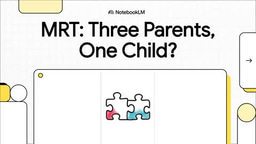
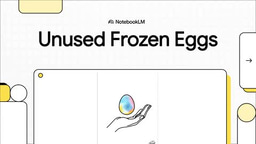
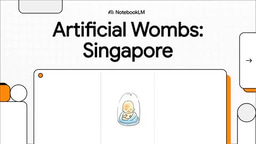
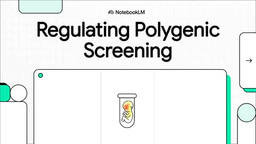
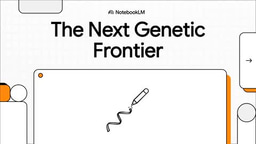
Please sign in or register for FREE
If you are a registered user on Research Communities by Springer Nature, please sign in